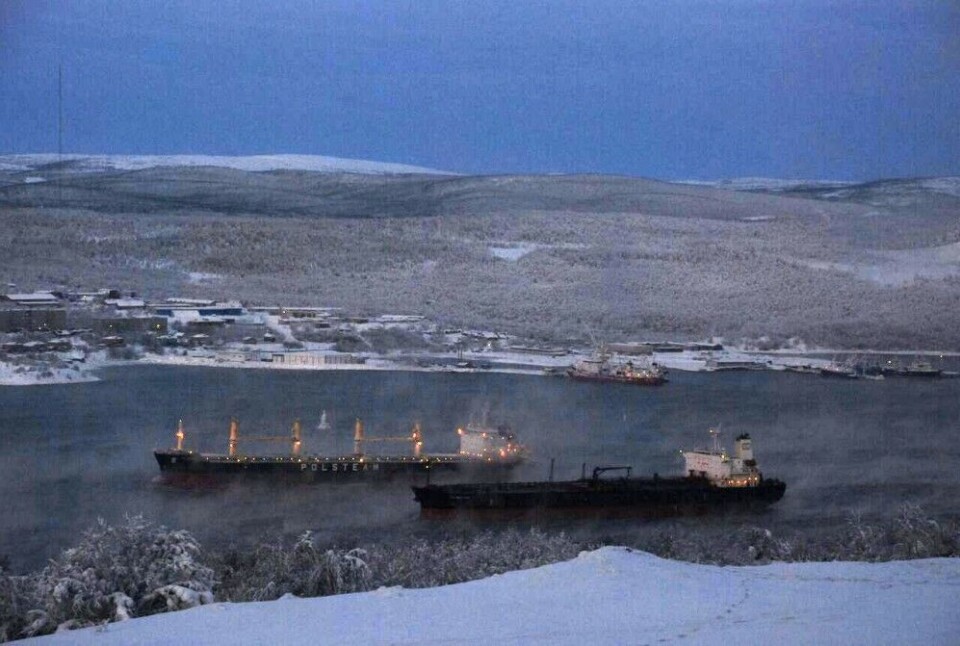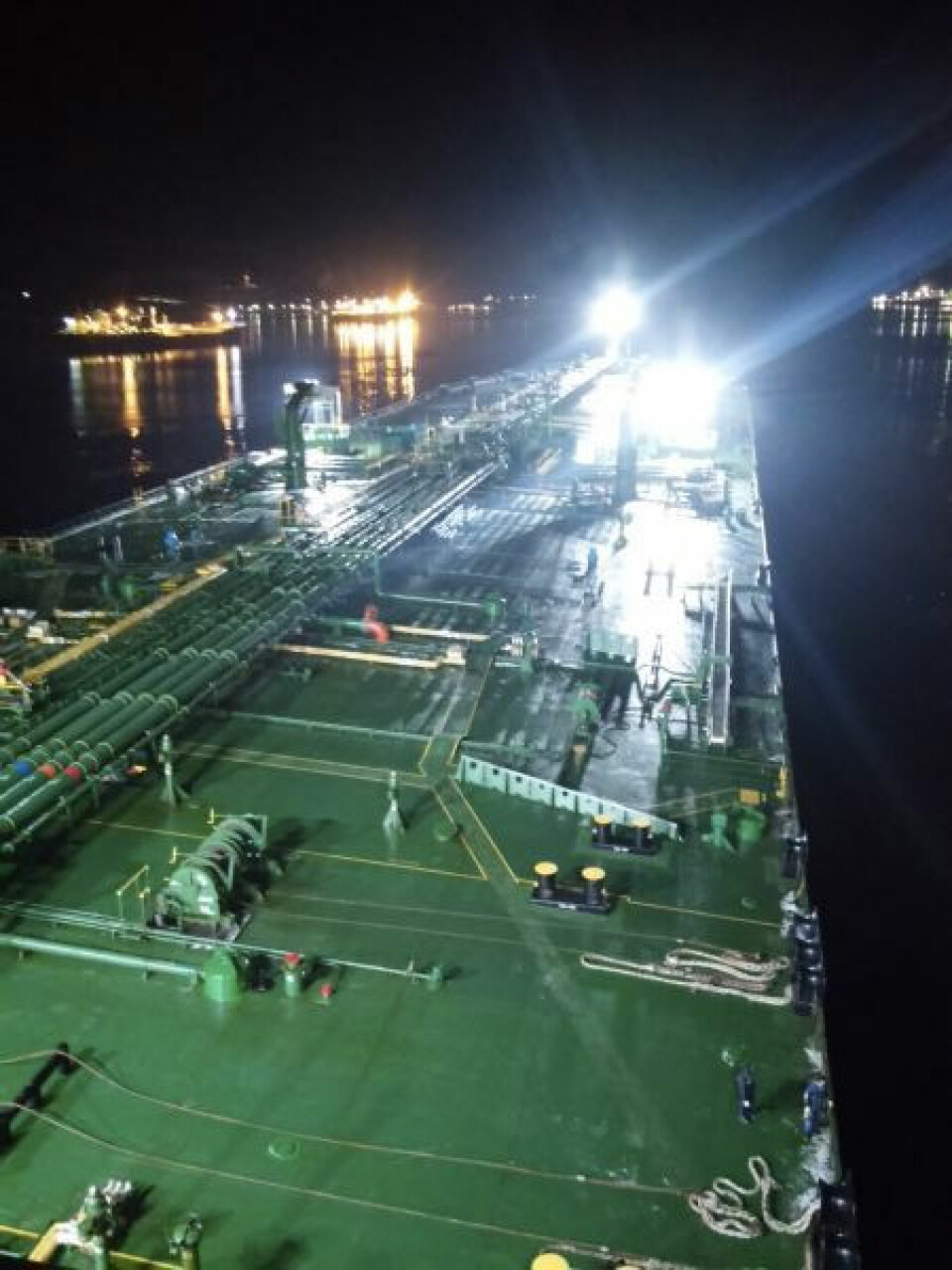
Lukoil’s new terminal tanker anchors up in Kola Bay
It can store up to 309,000 tons of oil, and will be key part of the company’s growing shipping operations in Arctic waters.
p.p1 {margin: 0.0px 0.0px 14.0px 0.0px; line-height: 16.0px; font: 14.0px Helvetica; color: #000000; -webkit-text-stroke: #000000; background-color: #ffffff}span.s1 {font-kerning: none}

The tanker named «Kola» on 17th December found its permanent location near Cape Filinsky, a site few kilometres from the Murmansk city, port authority Rosmorport informs.
The operation included complicated manoeuvring in the Kola Bay, and the local harbour masters spent almost 24 hours to get the ship anchored up and in safe position, the local harbour masters say.
The 335 meter long «Kola» has a deadweight of 309,000. It will be ready for operations early 2018, PortNews reports.
Lukoil is a leading company in Russian Arctic oil shipping. It owns and operates the Varandey terminal on the coast of the Pechora Sea, from where major volumes of oil is pipelined from fields in the nearby Nenets Autonomous Okrug. According to data from the Russian Association of Sea Ports, the Varandey terminal in the course of the first ten months of 2017 handled a total of 7,0 million tons of oil, an increase of 5,4 percent compared with the same period in 2016.
All oil from Varandey is shipped out through the Pechora Sea and to Murmansk, where its is reloaded into terminal tankers and subsequently shipped to buyers abroad. It will now be the «Kola» which is to serve as the company terminal hub in Murmansk.
It is not the first terminal tanker of its kind in the Kola Bay. From before, Gazprom Next operates the «Umba», a 300,000 ton tanker, located in the Arctic fjord. The «Umba» receives oil from Prirazlomnaya, Russia’s only oil-producing offshore field in the Arctic, as well as the Novy Port field in Yamal.
Lukoil before 2016 used oil reloading facilities in nearby Norwegian waters for its Varandey oil. In 2015, a total of 6,5 million tons of Lukoil’s Arctic oil was reloaded ship-to-ship on a site near Kirkenes, the Norwegian border town.
The oil reloading was subsequently moved to Murmansk where ship-to-ship reloading was conducted with Russian tankers, among them the ships «Kapitan Gotsky” , «Proteas» and «Vasily Dinkov».
















